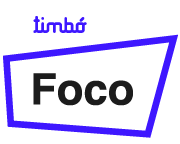Gastronomic creations and their legal protection, specially referred to intellectual property
DOI:
https://doi.org/10.47274/DERUM/38.2Keywords:
Gastraonomy, Intellectual property, Innovation, Legal protectionAbstract
Gastronomy is an economic activity that reflects the cultural development of peoples throughout History. Innovative creations (recipes, food dishes, appliances ...), both in technology and in products and services in this area, mark the dynamics of the market. The legal regulation on Intellectual Property today determines market possibilities and individual development of many companies. There are also creations of the gastronomic public domain that it is impossible to monopolize, they belong to society. There are legal regimes that, from the cultural perspective, regulate these issues and allow maintaining quality and access, resulting in the development of local communities.
Downloads
References
AGUILAR PIÑA, Paris, “Cultura y alimentación. aspectos fundamentales para una visión comprensiva de la alimentación humana”, en Anales de Antropología, vol 48, Issue 1, enero 2014, pág. 11-31, pág. 12 https://www.sciencedirect.com/science/article/pii/S0185122514704874, vto. 26/setiembre/2020
ARAUJO MAUÉS, Adriana, ALVES DE OLIVEIRA, Rossana, AFONSO FREY, Irineu, “Receitas culinárias: uma abordagem sobre a proteção intelectual na gastronomia”, donde mencionan que a julio de 2018 habia registradas 23 recetas. http://www.api.org.br/conferences/index.php/ISTI2018/ISTI2018/paper/viewFile/651/368, vto. 3/octubre/2020
BARHAM, Peter, “La cocina y la ciencia”, tr. Rosa María Oria Almudí, Acribia, Zaragoza, 2003
BRILLAT-SAVARIN, Jean Anthelme, “Fisiología del gusto”, Ed. Óptima, Barcelona, 2001.
BUGALLO, Beatriz, “El sabor de un alimento no se protege”, http://derechocomercialbeatrizbugallo.blogspot.com/2018/11/el-sabor-de-un-alimento-no-se-protege.html, vto. 26/setiembre/2020
-----, "La Propiedad Intelectual", Fundación de Cultura Universitaria, Montevideo, 2006.
-----, “¿Llegan o no?... Las marcas olfativas”, http://derechocomercialbeatrizbugallo.blogspot.com/2017/11/llegan-o-no-las-marcas-olfativas.html, vto. 25/setiembre/2020
-----, “Trade dress” se puede proteger como marca”, http://derechocomercialbeatrizbugallo.blogspot.com/2016/12/trade-dress-se-puede-proteger-como-marca.html, vto. 2/octubre/2020
BUSTILLOS, María, “The Chef for every Age”, https://www.eater.com/2016/7/6/12095640/marcel-boulestin-chef-cookbook-history, vto. 3/octubre/2020
CID JURADO, Alfredo Tenoch, “La semiótica culinaria y el patrimonio cultural: la cocina colombiana”, en “Revista Chilena de Semiótica”, número 8 – julio de 2018, pag. 7 a 24. https://revistachilenasemiotica.cl/_files/200000131-7203372fe2/Cid%20Jurado_RCHS_8-7-24.pdf, vto. 26/setiembre/2020.
CORDÓN, Faustino, “Cocinar hizo al hombre”, Tusquets, Barcelona, 6ta ed., 1999
DOURNES, Jacques, “El tiempo y el menú”, en “La cocina de los antropólogos”, “The Royal Anthropological Institute”, 1977, tr. De Marcelo Cohen, Tusquets, Barcelona, 2001 2da ed.
FARAUDO DE SAINT GERMAIN, Luis, “El Libre de Saint Soví. Recetario de cocina catalana medieval.”
https://www.raco.cat/index.php/BoletinRABL/article/view/196586/269776 , Vto. 13/setiembre/2020
GUTIÉRREZ DE ALVA, Cecilia Isabel, “Historia de la Gastronomía”, Red Tercer Milenio, Mexico, 2012
IGLESIAS, Yolanda, “Food design thinking o cómo juntar la comida, las personas y el diseño”, https://designthinking.gal/food-design-thinking-o-como-juntar-la-comida-las-personas-y-el-diseno/, vto. 26/setiembre/2020
LESAKO, Gina, “Recipe Writing Guideline”, explica también cuáles habrán de ser las partes o factores de la receta de cocina: “The following factors go into writing a recipe — it must have: 1 A title 2 Number of servings and serving size; 3 Ingredient list, 4 Preparation method.” https://foodandnutrition.org/blogs/stone-soup/recipe-writing-guidelines/, 6/setiembre/2020
LYMAN, Jenni, “Blog: #FoodPorn in the US – Is it Illegal?”, en Blog del “Journal of Law and Technology”, University of Richmond, sept./2015,
https://jolt.richmond.edu/2015/09/17/blog-foodporn-in-the-us-is-it-illegal/#_ftnref3, vto. 5/octubre/2020
LYPSZYC, Delia, “Derechos de autor y derechos conexos”, UNESCO – CERLALC – ZAVALÍA, Buenos Aires, 1993.
MEJÍA LÓPEZ, Lina Sarai, HERNÁNDEZ LÓPEZ, Ricardo, MEJÍA CASTILLO, Sonia Edith “Cocina y arte... doble significación”, en “CULINARIA Revista virtual especializada en Gastronomía”, No. 6 Julio/Diciembre 2013, pag. 7 – 22, http://web.uaemex.mx/Culinaria/seis_ne/PDF%20finales%206/cocina%20y%20arte%20ok.pdf, vto. 6/setiembre/2020
MINTZ, Sidney, “Sabor a comida, sabor a libertad. Incursiones en la comida, la cultura y el pasado.”, tr. Victoria Schussheim, Ediciones de la Reina Roja, S.A. de C.V., México D.F., 2003
MÓJICA LEGARRE, José Manuel, “Vocabulario de Cocina y Gastronomía”, https://www.academia.edu/11653900/Vocabulario_de_Cocina_y_Gastronom%C3%ADa, vto. 6/setiembre/2020
MONROY DE SALA, Paulina, DE FLORES, Graciela, “Introducción a la Historia de la Gastronomía”, Instituto Iberoamericano de Recreación, Turismo y Gastronomía, 2da ed., https://es.scribd.com/document/349150958/INTRODUCCION-A-LA-HISTORIA-DE-LA-GASTRONOMIA-docx-pdf, vto. 21/setiembre/2020.
NCC Staff, “10 important Supreme Court cases about food”, https://constitutioncenter.org/blog/10-important-supreme-court-cases-about-food, vto. 2/10/2020.
ORTUÑO ARREGUI, Manuel, “DE RE COQUINARIA “LIBER PRIMUS” DE MARCO GAVIO APICIO.”, en “ArtyHum, Revista de Artes y Humanidades 17”, página 73 – 78. https://rua.ua.es/dspace/bitstream/10045/52186/1/Apicio.pdf, vto. 13/setiembre/2020
PETERSEN, Valerie, “How to Write a Cookbook. Professional Advice for Cookbook Publishing” https://www.thebalancecareers.com/how-to-write-a-cookbook-ingredients-for-success-2800048, vto. 6/setiembre/2020
ROBERT GUILLÉN, Santiago, “Alta Cocina y Derecho de autor”, Reus, Madrid, 2017.
SALAS, Pilar, “Platos de alta cocina que han pasado a la historia... de la falsificación”, https://www.lavanguardia.com/comer/tendencias/20161228/412925318419/platos-alta-cocina-mas-copiados-historia.html, vto. 2/octubre/2020.
SALVÁ, Ana, “Cómo la impresión de alimentos puede revolucionar nuestro modo de comer”, https://elpais.com/elpais/2020/08/07/planeta_futuro/1596787428_315193.html, vto. 3/octubre/2020
SCHRAEMLY, Harry, “Historia de la Gastronomía”, tr. Manuel Tamayo, Ed. Destino, Barcelona, 1982.
"Sobre la etimología y significado de la palabra gastronomía (del libro "Perlas gastronómicas", Sara Castellví, 2010)”,
https://acgn.cat/sobre-la-etimologia-y-significado-de-la-palabra-gastronomia-del-libro-perlas-gastronomicas-sara-castellvi2010/, vto. 13/setiembre/2020.-
VAZQUEZ MONTALBÁN, Manuel, “Saber o no saber”, Ediciones B. S.A., Barcelona, 2002
ZAMPOLLO, Francesca PhD, PEACOCK, Matthew, “Food Design Thinking: A Branch of Design Thinking Specific to Food Design.”, en The Journal of Creative Behavior, Vol. 0, Iss. 0, 2016, pp. 1–10, https://www.researchgate.net/publication/302917120_Food_Design_Thinking_A_Branch_of_Design_Thinking_Specific_to_Food_Design , vto. 26/setiembre/2020























